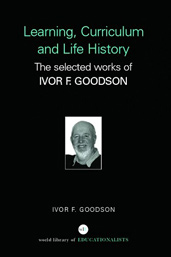Learning, Curriculum and Life Politics: the selected works of Ivor F. Goodson
Long Waves of Educational Reform
In the spring of 1969 came what was perhaps the most important direct result of Hall-Dennis – the introduction of a credit system, to which all high schools had to convert by September 1972. The credit system marked Ontario’s turn to a subject promotion approach, applied not only to academic areas but also, for the first time, to vocational subjects. Under the new regulations, students needed to take a minimum of 27 credits (each equivalent to 110-120 hours’ class time) to receive a Grade 12 graduation diploma. Of these 27, 12 had to come from particular areas (though students had some choice within the areas), and 15 were totally elective (Gilbert 1972, pp. 10-11 & 54-59). The credit system – made feasible by the ability of computers to do the timetabling – gave students a new degree of freedom in managing their secondary school career. According to proponents, it was intended to also give teachers greater autonomy in course design, while allowing students to contribute to curriculum development through their choice of subject (Stamp 1982, pp. 220-222).
All of our case study schools were influenced by the ethos of Hall-Dennis: in Lord Byron School, the founding philosophy of the school stressed the progressive intentions of this government policy. In Talisman Park, a new period of innovation set in at this time, and in Eastside School, the established rules and procedures were dramatically changed in this period.
At Eastside School, the new approach had major repercussions on the school ethos. For one thing, it marked the end of the system where a whole class moved together. In academic subjects, this had led teachers to specialize the content of each class to accommodate students’ practical interest. With the new system, each class had what older teachers thought a ‘peculiar mixture’ of students from a variety of courses (Interview, Jan. 1994).
The credit system also proved the end of the central concept of concentration in a specific technical area at the high school level. Under the old regime, technical students had taken a core specialty, supplemented with strictly related areas – a route intended to lead straight to employment. Now students tended to pick a variety of subjects. As one teacher said, “it monkeyed around with a system that I thought was working quite well, and it’s pretty well destroyed it” (Interview, Oct. 1994).
At the same time, the Ministry of Education – under the influence of the Teachers’ Federation – tightened the rules for teacher qualification. Suddenly schools could only get letters of permission allowing them to hire uncertified teachers if absolutely no certified teacher in the province had applied for the job in question. Even when there was a pool of certified teachers, department heads lost their right to choose from them; they had to take whoever had the certificate and was next on the Board’s list (Interview, Jan. 1995).
